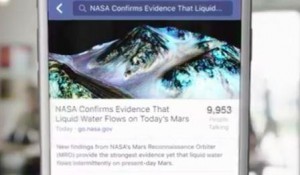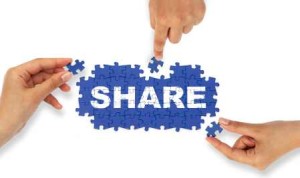The essence of employee recognition lives within the eye of the beholder. Generally, it’s characterized by upholding and reinforcing positive behaviors in the workplace through formal acknowledgement and rewards.
Traditionally, this fostering of good work activity has lived in the confines of long-established service awards and spot awards. Both are solid strategies. Service awards recognize the milestone years of service contributed by employees, helping them realize that their efforts and loyalty are noticed and appreciated. Spot layers on top of the more occasional service award strategy and regularly recognizes above-and-beyond actions by employees that exhibit core values.
Though the traditional recognition forms are impactful, modern ever-changing work cultures are quickly adopting these and more strategies for retention, employee satisfaction, and engagement. In that way, these essential recognition forms have become table steaks rather than the superlative benefits they once were.
Since employee recognition has a positive effect on culture, happiness, productivity and more – companies are making an effort to further their approach in recognition to further realize the results.
In fact, according to CONTROL, OPPORTUNITY & LEADERSHIP, a study conducted by Shawn Bakker of Psycometrics, when employees were asked how to improve engagement, 58% of them mentioned employee recognition. Meanwhile, according to Harvard Business Review, employees reported a 50-day period since they last felt they were recognized in any way at work.
The following recognition methods expose new strategies to satisfy those two statistics – providing more recognition that is valuable for workplace behaviors, as well as more continuous recognition to further the employee experience.
Offline Spot Recognition
Yes, spot recognition was already mentioned above as “table steaks,” but sometimes the focus in today’s times are so online that we neglect the potential of offline.
Think back up the page to the employees that have gone almost two months without feeling recognized. It’s possible that the recognition medium used isn’t capturing everyone sufficiently or completely. Floor staff, factory employees, and other workers with less frequent access to the computer may go unrecognized in a highly-online program.
Keep it simple. Remember the basics, providing in-person thanks is okay and even more appreciated in a digital world. This enhances the spot effect. When a line worker on the factory floor is exhibiting great, recognizable actions – rather than waiting for their manager to perhaps remember to later log into the program to give virtual thanks, encourage the literal pat-on-the-back and a physical certificate or code. Prepare managers with a set of physical spot awards to hand out directly on the spot, later to be redeemed through the online program, where the physical world meets the virtual one.
Peer-to-Peer
Company value arises when employees feel recognized. But remember, the recognizing does not always need to be from company-to-employee, or manager-to-employee. Employees themselves hold the power of the positive effects of employee recognition through encouraging and acknowledging each other.
Companies further this inter-employee recognition by offering up peer-to-peer abilities as a part of their program. Setting up employees with a finite budget to use in recognizing their fellow workers does a lot for culture. First, it helps in the desire for recognition to be continuous rather than occasional. Second, by allowing employees to be the giver rather than only the receiver, they feel trust, autonomy, and often further appreciate the spirit of recognition. Lastly, intelligence. Seeing who the top recipients of peer awards are helps company leaders identify influencers in the workforce – i.e. those going the extra mile, not just according to themselves or even their managers, but by their peers through rewarded actions.
Social Recognition
The good effects had by peer-peer engagement do not have to be monetary. By blending non-monetary forms into the program, the value of continuous daily recognition can be had throughout the organization without immeasurable cost or large budgets.
Badges, eCards, messages, virtual highfives and cheers should be considered to get the ball rolling on employee engagement. A social stream showing the interactions that encourage repeat actions throughout the workforce helps the ball roll even faster.
Wellness Incentives
Exhibiting good employee actions does not have to be limited to direct work related behaviors. Keeping healthy adds profound indirect value to the workplace. Less illness, less time off, more health, more happiness.
Encourage wellness value and its positive company effects by recognizing activities conducive to good health – like hitting step goals, water consumption, annual physical visits, and more. These activities create a happier and healthier employee, and can even directly reduce your insurance costs.
Safety Incentives
Employee safety is one of the most important priorities of the workplace – if not the most important. Avoiding unsafe activities and environments in the workplace is imperative. That is why encouraging safe behaviors, reinforced by rewards and recognition is highly practiced in the workplace.
Reporting near misses, potential hazards, days without incidents, and similar safe practices helps to ensure that the company is doing its part in deterring avoidable accidents and keeping employees as safe as possible.
Performance Incentives
The notion of recognition differs from that of incentives. While recognition is often proactive and aims to continue positive behaviors happening at work, incentives is often reactive and aims to drive performance to higher levels of achievement using rewards.
In this way, consider direct performance incentives to be results-oriented recognition.
Performance incentives help to place an earning potential on highly valuable leading indicators to company growth. Customer service centers often use performance incentives to reward over-expected case resolutions, or positive customer service experience surveys. Some sales development teams use rewards for meeting appointments or dials above goals.
Investing in the performance of activities which serve a clear path to future value helps to ensure the achievement of overall company objectives.
Business & Finance Articles on Business 2 Community
(27)







